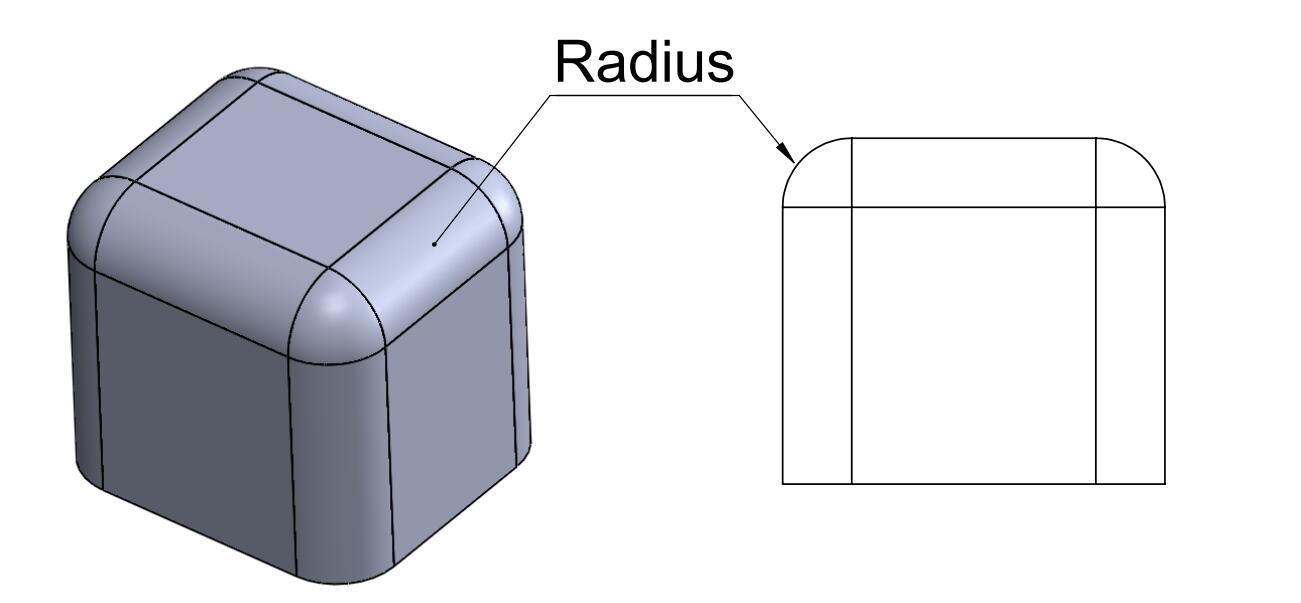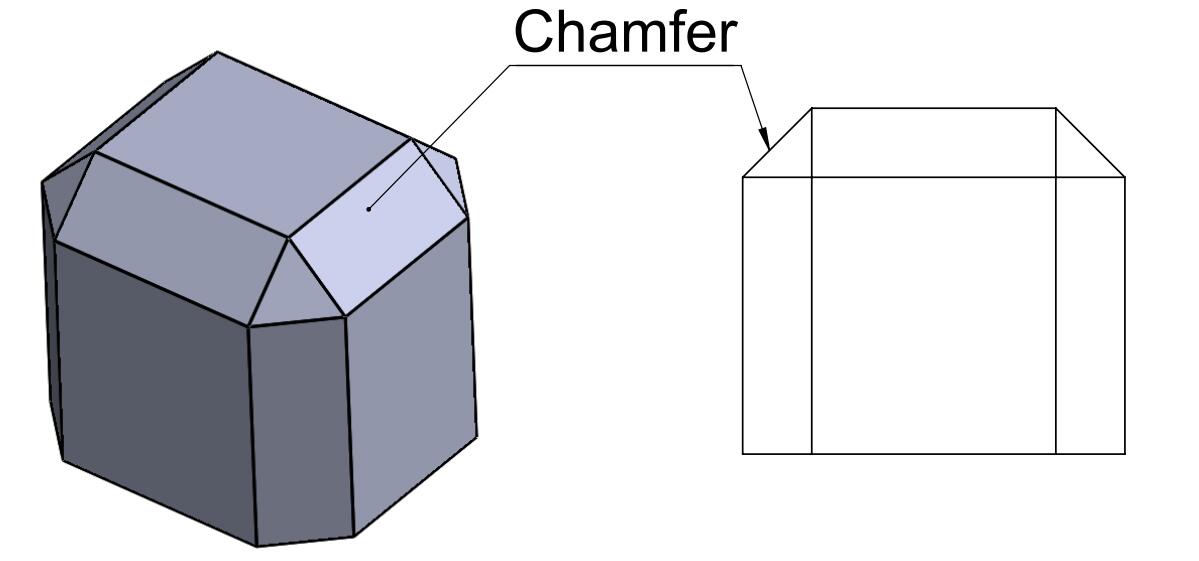In the realm of machining, the incorporation of fillets and chamfers plays a pivotal role in both the design and functionality of machined components. Understanding the difference between rounded corners and chamfers can determine whether a part is successful or failed. Making the right choice can also save processing time, which means that parts will be prepared faster and more cost-effective. Choosing the wrong option may result in insufficient component usage time. In addition to smooth and sharp edges, rounded corners and chamfers can also reduce stress on finished components and increase aesthetics.
CNC Machining Fillets
A fillet is the rounded edge or fillet of a part. Rounded corners help reduce tension and distribute it on larger surfaces, improve load-bearing capacity, and help prevent rapid deformation of stressed parts. Concave fillets are located inside the component, while convex fillets are usually located outside.
They serve to distribute stress concentrations, reducing the likelihood of cracks or fractures in the material. Fillets contribute to the visual appeal of a machined part by eliminating sharp corners. This is particularly important for components in consumer products and industries where a polished finish is crucial.
Fillets are commonly employed in the design of engine components and structural elements to improve fatigue resistance.
Fillets may require special tooling or toolpath considerations during machining. The radius of the fillet needs to be precisely controlled to meet design specifications.

CNC Machining Chamfer
Chamfer refers to a flat, sloping edge or part, also known as a chamfer. A single tool can produce chamfers of different sizes, so a style can include these chamfers without increasing the manufacturing time and cost of the parts. Chamfering does provide stress resistance, but on a smaller surface area, overall, their stress resistance level is lower than that of rounded corners.
They serve to strengthen the edges, preventing damage and extending the life of the component.
Chamfers facilitate easier assembly by guiding components into place, especially in applications where precise alignment is crucial.
Chamfers are commonly found in bearings and shafts to improve the assembly process and prevent damage during handling.
Chamfers are relatively straightforward to machine, but their precise dimensions are critical for achieving the intended functionality. CNC machines can precisely control chamfer angles and lengths.

Benefits of Fillets and Chamfers:
- Improved Strength and Durability:
Both fillets and chamfers contribute to the overall strength and durability of machined components, reducing the likelihood of premature failure.
- Enhanced Aesthetics:
Fillets eliminate sharp corners, providing a sleek and aesthetically pleasing appearance to machined parts.
- Assembly and Handling:
Chamfers make it easier to assemble components and reduce the risk of damage during handling and installation.
- Stress Concentration Reduction:
Fillets, in particular, are crucial for mitigating stress concentrations, ensuring that the material can withstand loads without failure.
Consideration of Fillets and Chamfers:
The selection of CNC machining chamfers and fillets mainly depends on specific application requirements and machining conditions. The following are some key factors to consider when choosing:
- Functional requirements: Select based on the actual application requirements of the product. For example, if better impact resistance is required, it may be more suitable to choose chamfers instead of rounded corners. If better anti collision and scratch performance is needed, rounded corners are more suitable.
- Processing difficulty: In some cases, using rounded corners may be easier to process as it only requires smoothing of the edges, while chamfering requires creating more complex slopes. However, if the cutting tools of the processing equipment are not suitable for machining rounded corners, it may be necessary to choose chamfers.
- Cost: Generally speaking, the machining cost of rounded corners may be higher because more precise machining and more advanced cutting tools are required. The processing of chamfers may be relatively simple and cost-effective.
- Aesthetics: In some designs, rounded corners may be more aesthetically appealing, giving people a smooth and rounded feeling. Chamfering may be more functional, emphasizing the clarity and stability of the structure.
- Materials: Different materials have different reactions to tool wear and cutting force, which may affect machining difficulty and cost. For example, materials with higher hardness may require the use of harder cutting tools to process rounded corners or chamfers.
- Size: For very small details or very large structures, processing methods and tools may vary. Therefore, it is necessary to choose the appropriate chamfer or fillet type based on the specific size range.
Conclusion
Incorporating fillets and chamfers into the design of machined components is a thoughtful and strategic approach. Beyond their aesthetic contributions, these features significantly impact the mechanical properties and functionality of the final product. Engineers and machinists collaborate to optimize these features, ensuring that machined parts not only meet design specifications but also exceed expectations in terms of performance and longevity.



